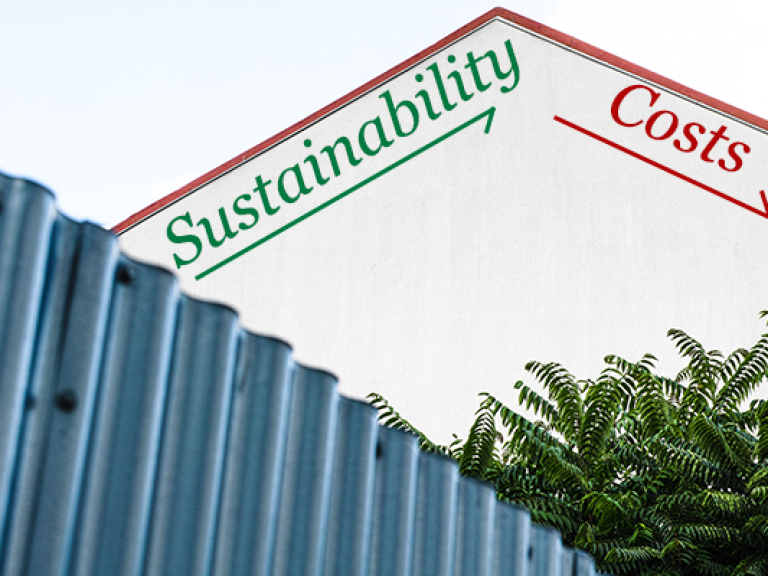
Two key criteria determine your borrowing capacity for investment property:
• Loan value ratio (LVR) – the amount of the loan, as a percentage of the value of the mortgage security that a financier will be prepared to lend. It refers to the amount you can borrow.
• Debt service ratio (DSR) – the amount of income the lender requires you to have available to service payments on the loan. It refers to the lender’s assessment of your ability to repay the debt or cover the interest payments (depending on the terms of the loan).
Loan value ratio
Traditional banks will take a security position against a property, according to their perception of the risk involved. They can lend up to 95 percent of valuation (or contract price) on a house for owner-occupancy, and perhaps even investment, but their LVR is significantly less for items such as rural land, on which they may only lend 50 percent.
Different lending institutions have different policies on what LVR is acceptable to them. LVRs may vary by 15 percent from bank to bank, as their appetite for particular types of property varies. The following are the maximum LVRs adopted by most lending institutions, as a general guide:
• Owner-occupier home: 95%
• Detached investment property: 90–95%
• Duplex: 90%
• Townhouse: 90%
• Residential property (in excess of $500,000 value): 80%
• High rise unit: 70%
• Commercial buildings: 70%
• Vacant land: 50%
• Rural dwelling: 50%
• Project development: 80%
Banks also have different ways of determining the value of the property, which will affect the amount of money represented by the LVR. For a loan of over 80 percent, you may be required to take out mortgage insurance to cover the lender against potential losses if you default. This isn’t as bad as it sounds as it’s a once only payment and it’s tax deductible over the period of the loan.
The general point is, in order to maximize your borrowing capacity, you’ll need to select a lender with the highest LVR (consistent with other factors, discussed following).
Debt service ratio
The affordability of a loan is calculated as the total of all your repayments (all loans, credit card debts and so on) as a percentage of your gross income. Most banks are comfortable with 30–35 percent, which represents about three times interest cover, that is, if the interest on a particular loan is $10,000 per annum, they may look for $30,000 in ‘available’ income to service the loan. However, the DSR will depend on the type of property. For example, if you are borrowing on your own home, the banks will generally publish a DSR of 30–35 percent, but they will calculate the interest based on interest rates being some percentage points higher than the actual borrowing rate. This can effectively push the DSR to nearer 25 percent, or four times cover.
The banks are often more lenient with investment property which has a passive source of income (rent) and some may go as high as 40–45 percent DSR. So for interest payments of $4,000–4,500, they will require at least $10,000 in available income. The DSR can also take into account up to 80 percent of the projected income from the investment property in calculating your income.
A simple formula for calculating your DSR in advance of applying to a lender is as follows:
• Your total gross income
• plus 80 percent projected income from investment property (if any)
• minus your total current financial commitments (other personal debts, including credit card borrowing limits, cost of dependants and so on)
• times 35 percent (general DSR)
• equals the total interest the bank is likely to deem affordable for you.
• Divide this amount by the interest rate to derive your total borrowing capacity.
So for example:
Your total gross income (salary) $50,000
plus 80% of projected rental income ($10,000) 8,000
minus total commitments (3,000)
55,000
times 35% DSR $19,250
Dividing by an interest rate of say eight percent, your total borrowing capacity for investment property would be $240,625.
However, this is only a general benchmark. Lenders may take into account different commitments and interest rates in making their calculations. No single set of criteria is used by all the major lenders. They will generally assess each loan application on its own merits.
The general point is that in order to maximize your borrowing capacity, you’ll need to:
• discuss with any prospective lender their DSR guidelines on the specific property you are looking to borrow on
• ensure that projected income from your investment property is included in your income assessment
• look for the highest available DSR.
Debt reduction
Your existing borrowings reduce your borrowing capacity. Therefore debt management is an important aspect of financing your investments. It’s important to know that:
• Loans that are not tax deductible lower your borrowing capacity for investment property. If you have any excess funds, start by paying additional loan repayments on a regular basis to those of your existing loans that have the highest interest rate. As each loan is repaid, direct these funds to the next highest interest rate loan until all non-deductible debts are cleared.
• Credit card limits lower your borrowing capacity whether or not you spend up to them.
Restrict credit card limits to the minimum that you think you require.
The term of the loan
One other thing that’s important to banks is when they’re going to get their money back. If you’re likely to take a short-term bridging loan and repay the bank within one or two years, they may be flexible on your DSR. For example, if you’re looking to renovate and on-sell a property, the bank may allow you to go to a higher LVR and DSR. State your intentions from the start in order to get the loan. You can generally revise your property investment strategy once you see how things are moving, and as you become more confident about the debt.
I once bought a house and borrowed 95 percent from the bank on the settlement on the basis that I was renovating the house and was going to on-sell it within the next six months. After getting the loan, six months later I had renovated the home but I decided to start living in it as my principal place of residence. (An advantage for tax purposes, as well.) I advised the bank that I would like to change the status of my loan to a principle and interest loan on a longer term. The bank revalued the property significantly higher than the amount I’d paid for it (in view of the improvements I’d made) and were able to readjust their loan value ratio.
The DSR may still have been an issue but as the loan was already drawn, the bank manager was able to be a bit in being flexible with the small print to ensure I qualified.
Before you make an application
Prior to making any application for a loan, contact your chosen lender and ask them if you meet their capacity requirements in terms of your income and existing loan commitments. Most lenders will answer this question, and if you do not qualify, you may need to consider an alternative lender. This is important, as lenders may record a loan application on your credit file regardless of whether the loan is approved and whether or not it proceeded. Too many applications can affect your credit rating which may lead to future loan applications being declined.
>>> Coming Next: Check Your Credit Rating
Please note: This is an extract from the Success From Scratch– it may not contain the exercises from the full version of the book/audioset, for full version please contact us or follow our blog for more.
Thank you,
The team@Custodian








